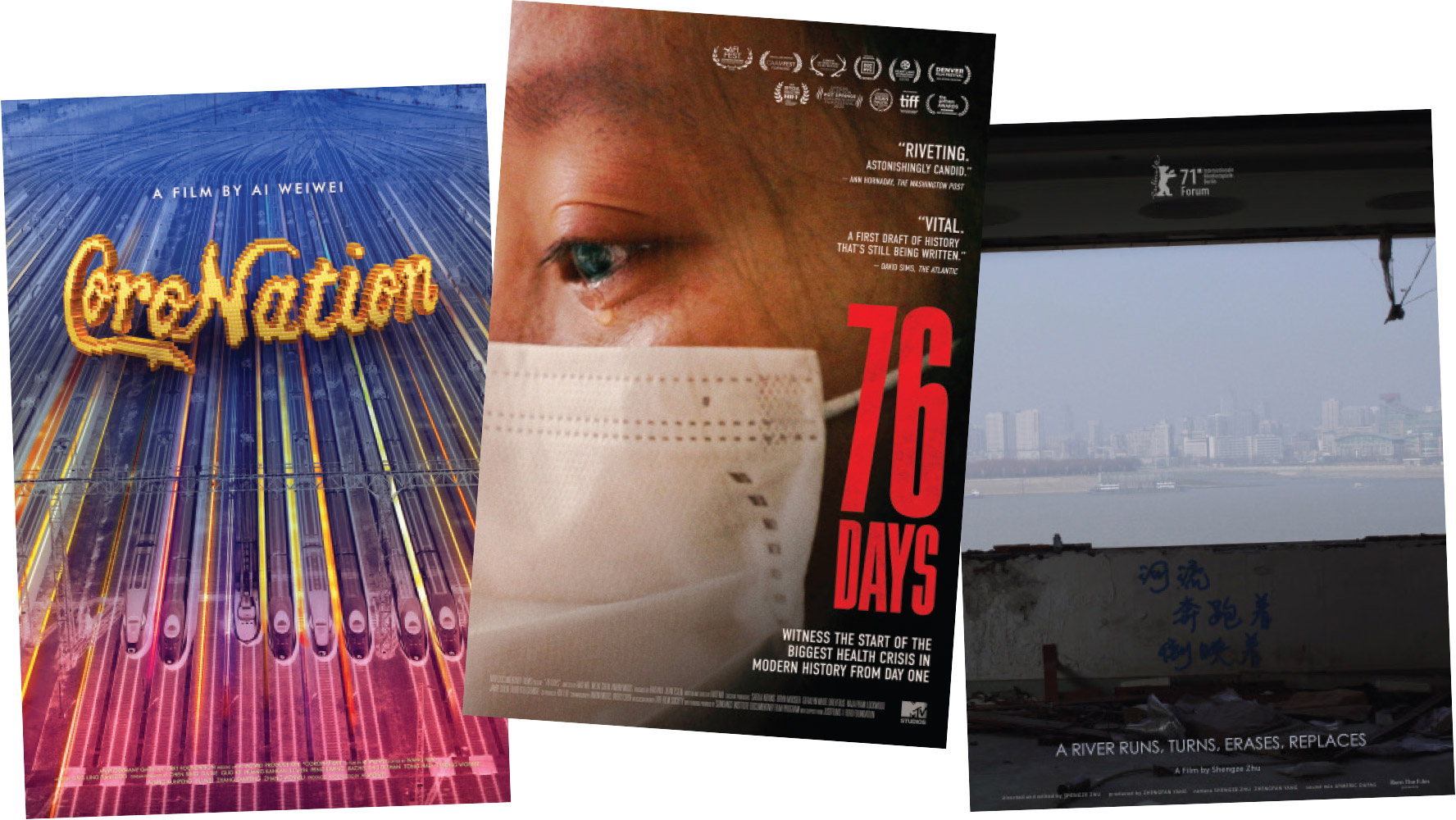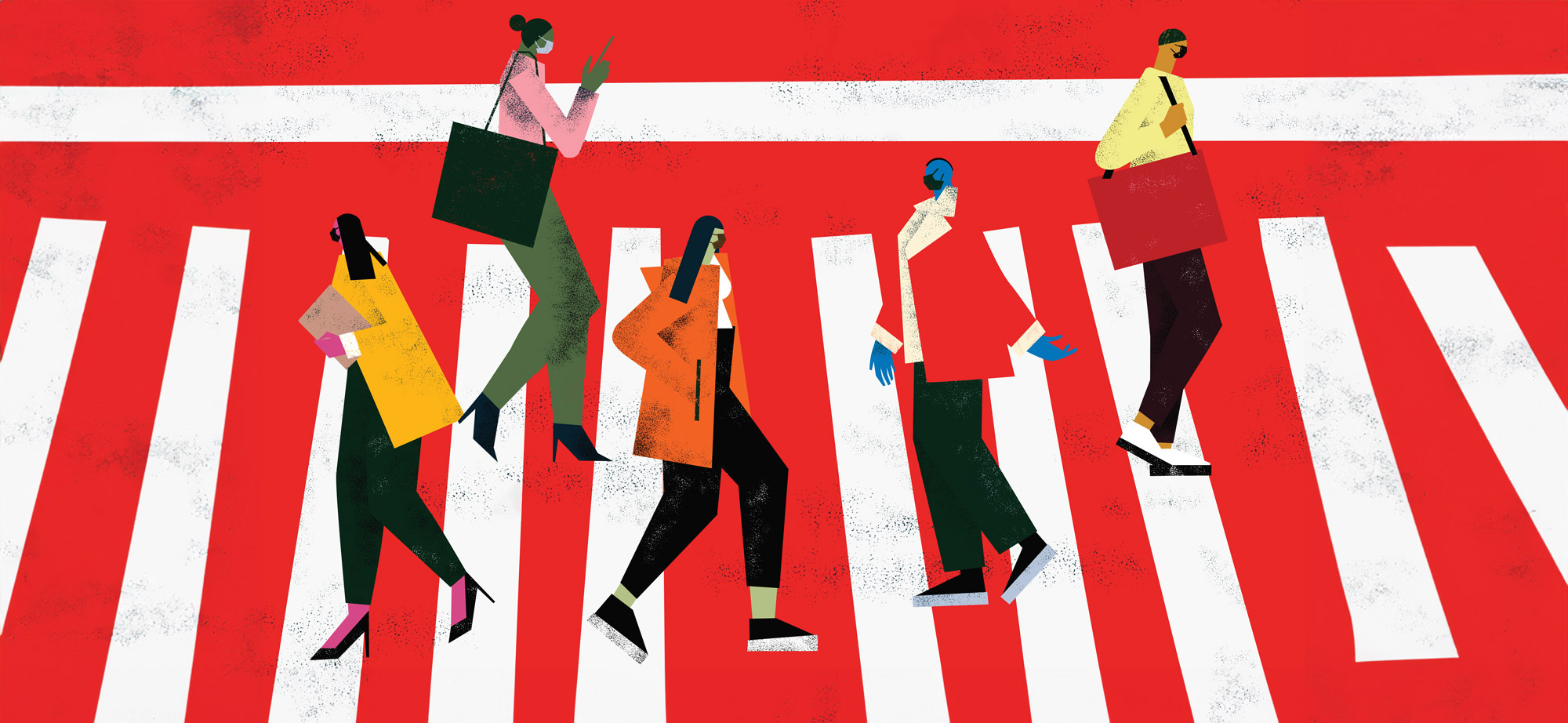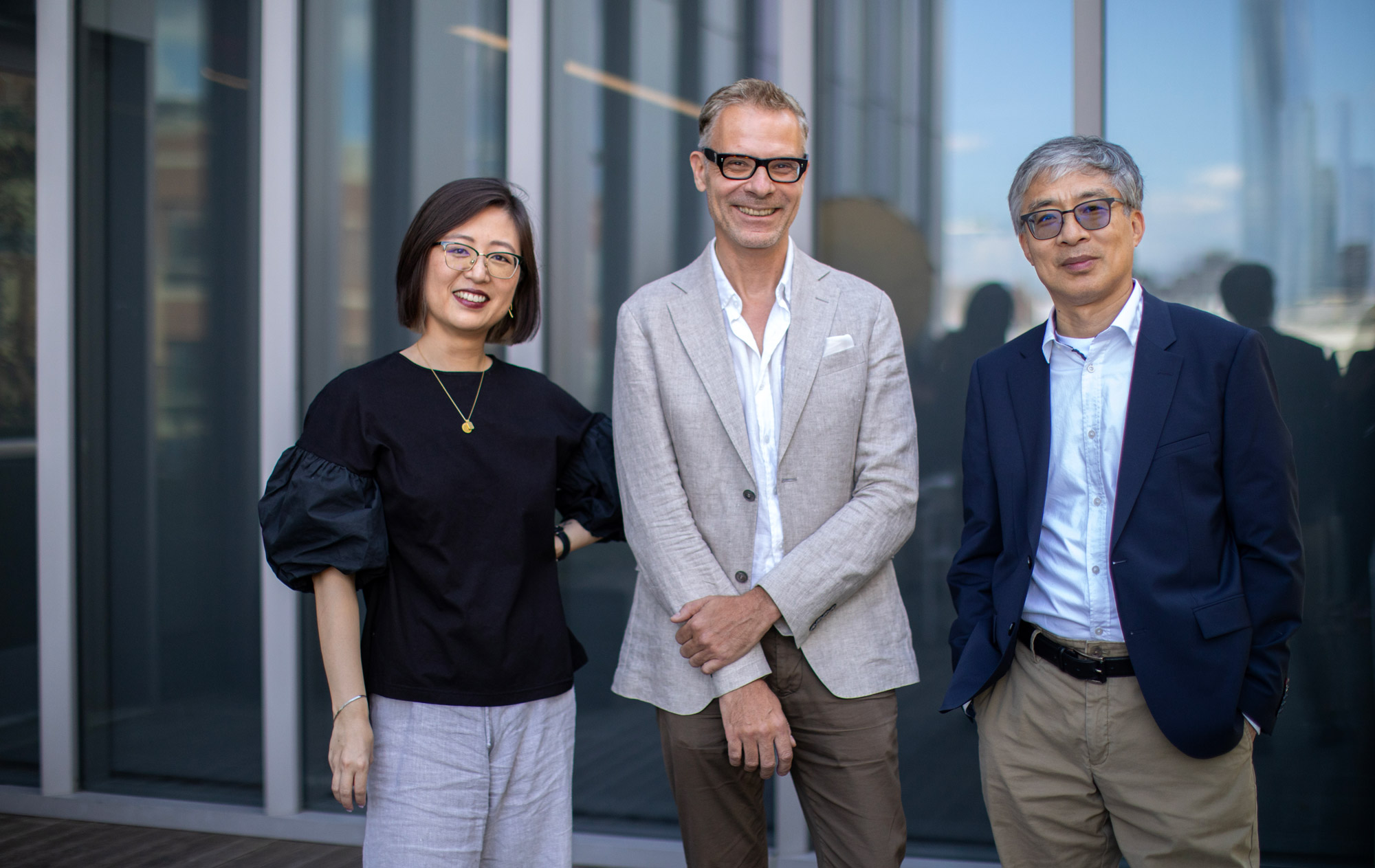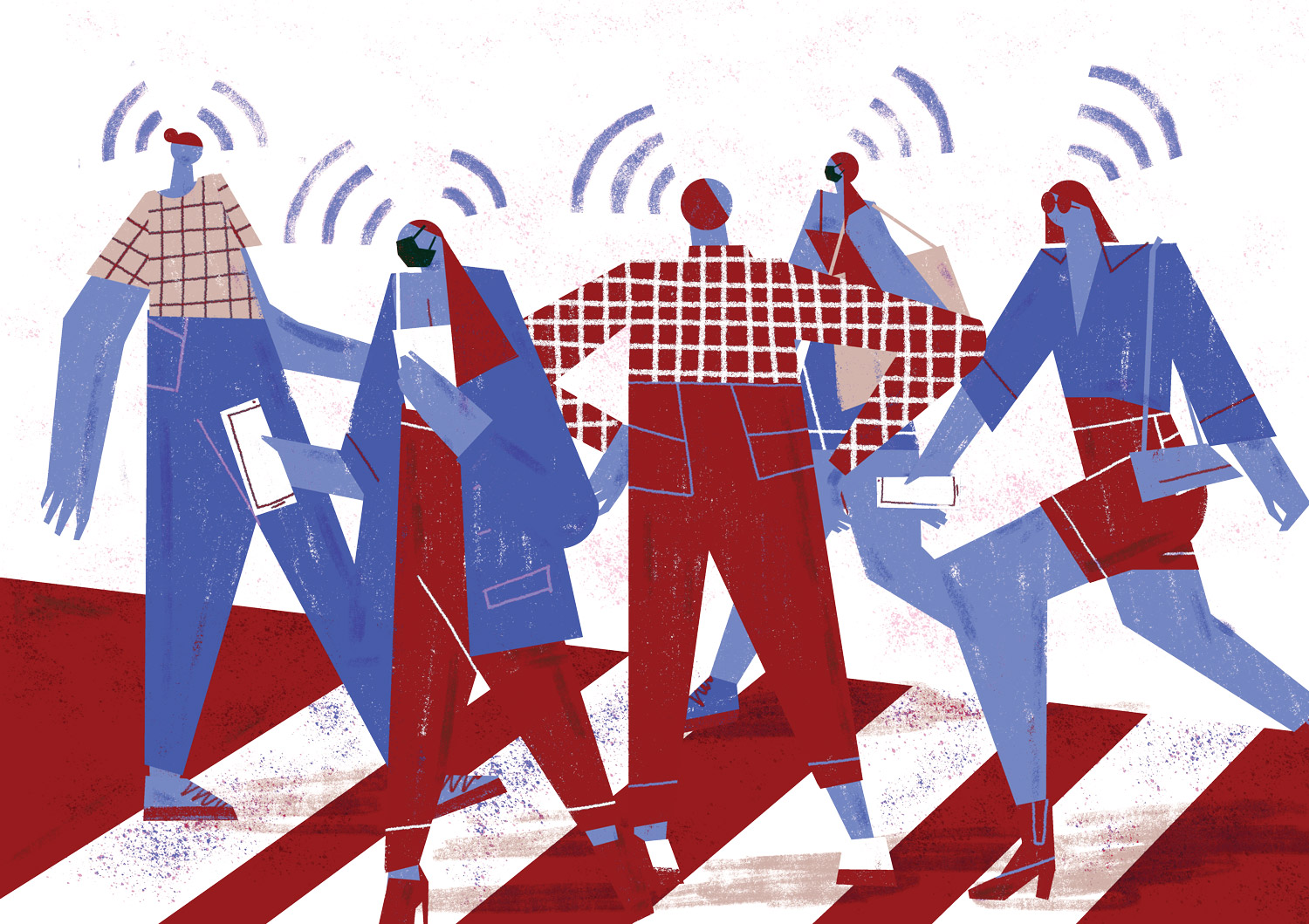
Rock & Roast, a standup comedy show popular in China, came out with a new season in the fall of 2022, after more than five months of lockdown in Shanghai. At the end of his performance, a comedian named Hu Lan joked, “A lot of things happened this year. But it feels like nothing happened.”
“I really feel like that captures how people are processing the experience of COVID and lockdown: Pretend nothing happened,” says Chenshu Zhou, Assistant Professor of Cinema & Media Studies, whose work focuses on China. “I see the same happening with protests against COVID policies, some of which were really radical. But now the protests are just gone.”
Diaspora and Film
Filmmakers in China have produced few filmic representations of lockdowns, says Chenshu Zhou, Assistant Professor of Cinema & Media Studies. However, within the diasporic Chinese filmmaker community, several documentaries were produced, starting in 2020.
Coronation, by artist and activist Ai Weiwei, uses footage filmed by people in Wuhan.
76 Days, directed by Wu Hao, focuses on the hospital rooms where COVID patients were kept and as a result, “presents the lockdown almost like a continuing present with no progression of time,” Zhou says.
A River Runs, Turns, Erases, Replaces, by Zhu Shengze. “It focuses on Wuhan as a city, but interspersed with fragments of diaries that people wrote during and after COVID lockdowns, remembering their families or talking about their experiences,” Zhou says. “It’s very poetic.”
“The chance of any of these being watched by people who were personally impacted by the lockdowns that they depict are very low,” Zhou says. “When analyzing such films, we should ask ourselves, ‘Who are they made for?’”
Teemu Ruskola, Professor of East Asian Languages and Civilizations and Professor of Law, brings up the same idea. Largely, he says, people in China endured lockdowns due to a sense of national pride and communal obligation. “Suddenly restrictions were just lifted, and everybody went on as if nothing had happened,” he says. “I think a lot of people wondered, why all the sacrifice? And I think there is a kind of lingering resentment for which there is no public forum.”
The quick changes in attitudes and behavior don’t surprise Guobin Yang, Grace Lee Boggs Professor of Sociology and Communication, whose expertise is in social movements, digital culture, global communication, and contemporary China. His latest book, The Wuhan Lockdown, uses an archive of more than 6,000 diary entries to uncover how residents of the city coped with the state’s management of COVID-19.
“If we think about the Cultural Revolution of the 1960s and ’70s or protests in the 1980s, those were periods of huge political and national turbulence,” Yang says. “And people suffered. But there was still so much adaptability and resilience, and I see something similar happening now. Ordinary people are managing radically disruptive situations in the way they always have.”
Today, a busy street in Beijing might appear similar to a scene on that same street in 2019. But even if people would prefer not to think about what happened in the interim—death, family separations, economic uncertainty—things have changed in the aftermath.
The Expansion of State Power
Ruskola, a scholar of Chinese law and society in a comparative and global context, says that one of the biggest changes in China since the advent of COVID is the expansion of state power. At the pandemic’s start, he wondered whether the Communist party would weaken. After all, he says, a virus is not a political enemy.
“But the Chinese state turned it around in an ingenious way,” he says. “Even in today’s China, people are willing to sacrifice for the collective. So, what emerged was a sense of national pride that China was more effective than others in managing this disaster. State surveillance is not new to China, but with COVID it became even more entrenched.”
He’s quick to point out that the rise in state power came with a corresponding rise in distrust from the general public, something China has not fully reckoned with. What happens next, he says, will have a lot to do with the economy. “An aspect of the social contract in contemporary China is that the government is competent and will deliver economic growth,” he says. “COVID has shaken people’s faith in this.”
Yang adds that people’s distrust of government is situational and may not be consistent—they might have faith in one policy or government structure but be suspicious of another. Particularly in rural areas, where popular local leaders may have the ability to bend rules to better serve the local population, citizens may have faith in government structures familiar to them even as they distrust the central party in Beijing, or vice versa.
Turning Inward
This embrace of the local relates to an overall inward turn that Yang says came out of pandemic experiences, especially in the scholarly community. “There is less openness to the outside world,” he says. “Certain universities and conferences have become difficult to access. It has been framed as China being less open, but it could also be defensiveness or wariness from the pandemic experience of being under global scrutiny.”
Zhou sees this inward turn reflected by Chinese moviegoers, too, who had waning interest in Hollywood films even before COVID. “Hollywood movies used to occupy all the top slots in the Chinese box office—Fast and Furious 7 was once number one,” she says. “But now there is a disconnect between what’s coming out of Hollywood and what people want to see. Hollywood’s attempts to diversify fall flat. When the new Mulan film was shown in China, it was widely ridiculed. People were like, ‘Girl, that’s not authentic makeup!’”
Migration Aspiration
During the pandemic’s early days, Lingyi Zhang, LPS’24, noticed something unusual happening on a popular Chinese app called Red. The multipurpose tool allows users to upload photos or videos, share reviews, and make purchases. But when COVID and lockdowns began, Zhang observed that users shifted the app from its original fashion-oriented content to a site about information sharing.
Locally, that meant sharing and seeking content relevant to daily life, such as unfiltered looks at living under lockdown and tips on dealing with food shortages. Zhang says the app cultivates a feeling of community and has become a space where users feel comfortable posting about personal matters. In addition to hosting conversations about daily lives within China, Red became a platform that allowed users to imagine their lives outside of the country.
Zhang’s capstone project investigates what she calls “migration aspiration” and how social media facilitates it. Her research involves observations of migration content on Red and ethnographic interviews with users, creating the opportunity to understand individual perspectives in the framework of a large-scale social analysis. “On a closed social media platform, you can learn from people in your community and get real, concrete details,” Zhang says.
The Red community includes a sizable group of Chinese citizens who have emigrated elsewhere like the U.S., Canada, and Australia. “On other major platforms in China, migration is not a positive word. People might be accused of not being loyal to the country” says Zhang. “But on Red, people are more likely to share their experiences of leaving China, including their struggles and what might be possible.”
She is still considering why Red emerged as the platform for such discussions and how accurately users depict their experiences, but suspects the relative openness is due to a user base that skews young and female. What’s not up for debate, Zhang says, is what motivates all this talk: “After COVID and lockdowns, people have different expectations about what their lives could be.”
Now, all the top slots are taken by domestic films. The Battle at Lake Changjin, about the Korean War, came out in 2021 and is currently the highest grossing movie of all time in China and the highest grossing war film of all time, anywhere.
I don’t want to draw a direct connection between the rise of feminism and the pandemic, but I do think that lockdowns cultivated an awareness of women’s issues and feminist criticism.
“It is what we call a main melody film—one that reflects official ideology,” says Zhou. “War films typically do well at the box office, as do middlebrow movies with medium budgets that reflect on social issues because they are so rooted in the contemporary reality of China. In addition, I’m seeing a lot more gender-conscious cultural criticism. I don’t want to draw a direct connection between the rise of feminism and the pandemic, but I do think that lockdowns cultivated an awareness of women’s issues and feminist criticism.”
There’s also a new tension, she says, between the inward cultural turn and a growing interest in migration. “Last year, people on social media began using the English word ‘run’ as shorthand for talking about leaving or running away from China,” Zhou says. “I attribute this to general frustration about life in China and the prospect of economic and social mobility.”
What Comes Next
When considering how experiences of COVID and lockdowns affected those in China, Yang urges people to embrace the tensions and complexities, using protests against zero-COVID policies as an example. People may have moved on quickly, he says, just as they did after major protests in 1989. Outside observers should not be surprised when protests happen again, nor should they expect that protesters necessarily want total change.
Like people elsewhere, Chinese citizens will always protest when they’re unhappy and we shouldn’t be surprised by that. Instead, we should recognize their activism and creativity in navigating their political circumstances.
“The recent protests were remarkable expressions of people’s frustration and resentment. However, I wouldn’t be surprised if some of these same people supported China’s COVID policies in 2020, simply because the circumstances have changed,” he says. “Like people elsewhere, Chinese citizens will always protest when they’re unhappy and we shouldn’t be surprised by that. Instead, we should recognize their activism and creativity in navigating their political circumstances.”
Many people in China would happily say that COVID is behind us, Yang adds. Lockdowns are over and citizens can move around freely. But the virus remains. After all, Ruskola reminds us, “COVID is not going anywhere. It’s going to be with us the way zoonotic diseases have been with humans ever since the first agricultural settlement.”
Rather than thinking about distinct pre- and post-COVID experiences, Yang says, “we need this experience to transform our understanding of the broad ramifications of infectious disease and public health issues to deal with continuing COVID and potential future epidemics.” In this way, experiences of lockdown, illness, and protest will shape our collective future.





